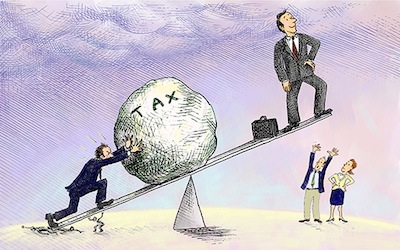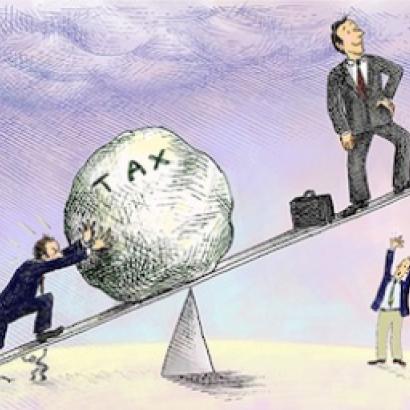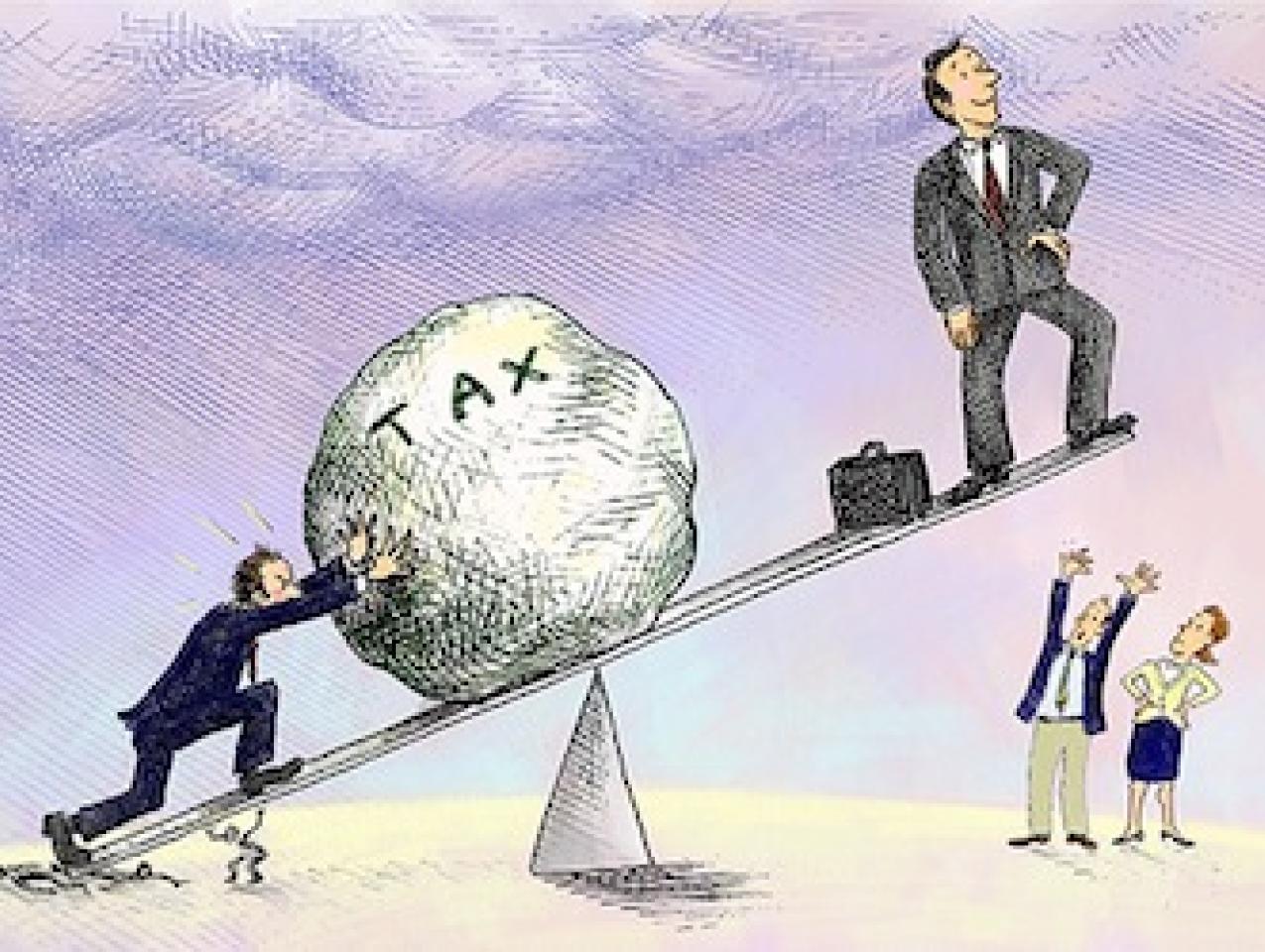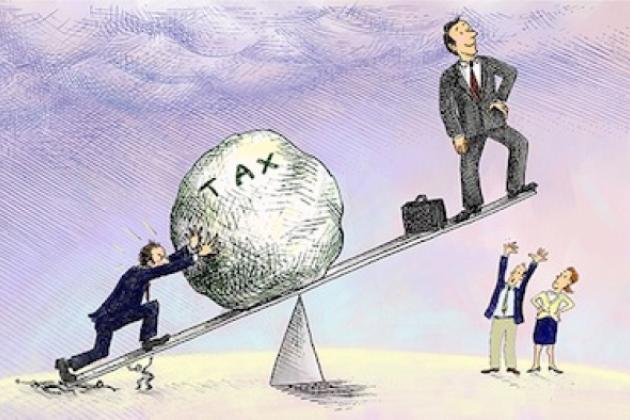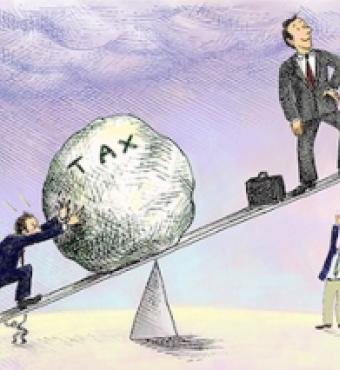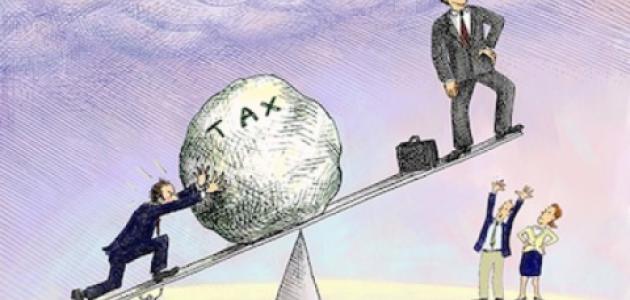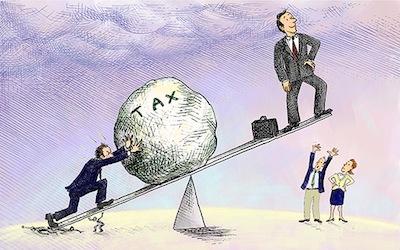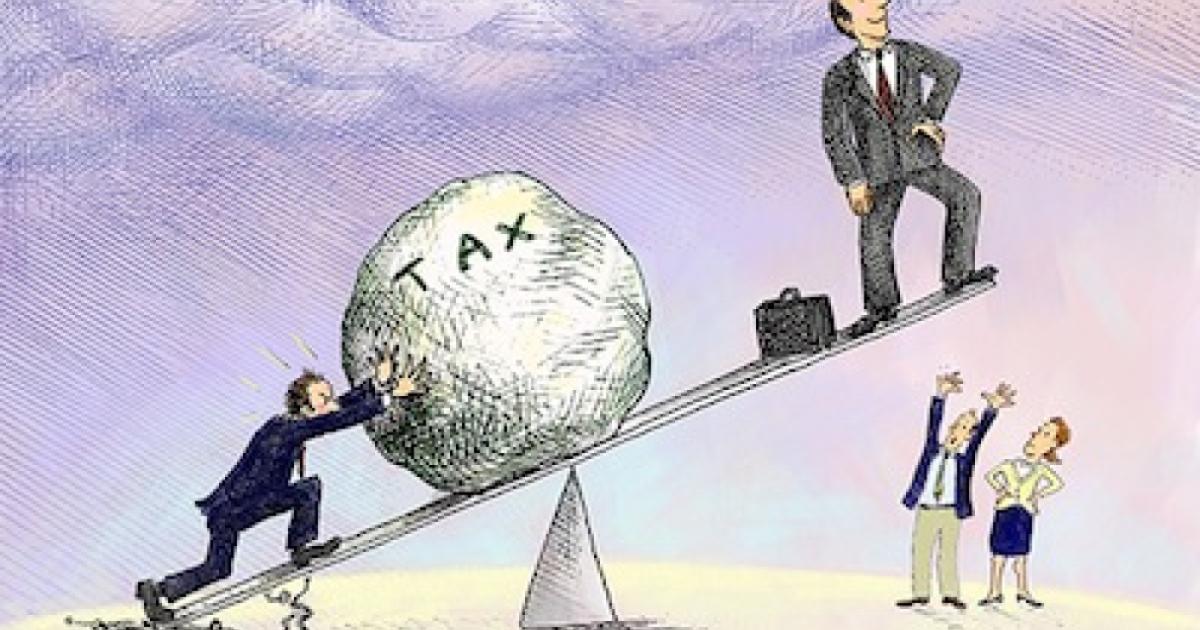Imagine that one of America’s state legislatures enacts a law exempting a particular company from the state’s corporate income tax. Or imagine that a city within that state adopts an ordinance exempting a particular company from land use regulations and building code requirements.
Outrageous! Neither could possibly pass the test for constitutionality. Surely such special favors would violate our core value of equal treatment under the law.
Would it be less offensive if the state, rather than exempting the company from taxes, just guaranteed the method for assessing the company’s taxes for a period of years, or if the city promised to provide public services not being provided to other companies? How are these special favors different, except in degree, from total exemptions from taxation or regulation? Is our commitment to equal protection so squishy as to allow for at least some preferential treatment, even where it advantages the already advantaged?

Illustration by Barbara Kelley
Apparently so. Consider, by way of example, Nike’s recent dealings with the State of Oregon and local governments within the state.
Nike is Oregon’s largest business. It is home grown. It employs over 8,000 people in the state and pays a significant amount in state and local taxes. With over $20 billion in revenues, it was 136th in the 2012 Fortune 500 rankings. The company and its co-founder Phil Knight are good Oregon citizens. Knight is Oregon’s most generous philanthropist by far.
Oregon loves Nike in return, so much so, it seems, that Oregon politicians from across the political spectrum will do everything they can to keep the company happy.
Last December, Oregon Governor John Kitzhaber called the legislature into special session on four days notice to enact legislation guaranteeing that the “single sales factor” method of calculating Nike’s taxes would not change for 30 years, even if the legislature adopted a different method for calculating the taxes of other companies. In return, Nike promised to invest $150 million and create 500 new jobs. In a transparently feeble effort to avoid any suggestion that the state is picking winners and losers, the law applies to anyone prepared to invest similarly in Oregon’s economy, which is almost no one.
Just last month, Nike spurned $80 million in incentives offered by the City of Portland and $15 million in Multnomah County property tax abatements intended to entice the company to build new facilities in Portland rather than adjacent to its current headquarters in neighboring Washington County. Washington County officials are mum, and apparently sworn to confidentiality, on what they might have offered to keep Nike at home.
There is nothing new in states, counties, cities, and towns competing to attract businesses. For much of American history governments have printed fancy brochures extolling their many advantages, they have sent delegations hither and yon to recruit, and they have entertained prospects with guided tours and plied them with food and drink. Nor is the sort of intergovernmental competition Nike benefitted from new. To the contrary, it is commonplace.
Tax and regulatory competition among states and between cities within states has been par for the course for decades. Any company not pressing for such breaks is failing its investors and compromising its future. But does it make sense for the economy and for state budgets? And is it fair to other taxpayers?
Proponents contend that tax and regulatory breaks for new and expanded businesses result in more jobs and increased tax revenues in the long run. But do these individualized tax and regulatory breaks really encourage new business ventures, or do they just shuffle the business and jobs from one place to another? A company that cannot exist somewhere without tax breaks is a company unlikely to survive anywhere once the breaks are gone. New jobs in one location usually mean fewer jobs in another.
As for tax revenues, a study by Texas A&M professor James Rogers found that interstate tax competition was a significant factor in the decline of business taxes as a share of total state revenues, from one half in 1950 to one quarter in 1990. Professor Rogers asked why states would do this to themselves and concluded that it is a classic case of prisoner’s dilemma. Each state assumes other states will offer tax breaks, so it offers them as well, despite the long-term loss of revenue. Like the workers, tax revenues are mostly moving from one place to another in response to interstate tax competition.
From the perspective of advocates for lower taxes and smaller government, this tax competition looks like a win-win. It’s the sort of creative competition the federal system is supposed to promote. But what about from the perspective of the taxpayers who don’t benefit from the tax breaks and are left paying for promised and sometimes guaranteed government services?
It’s one thing for states to compete for business by lowering their general tax rates or by making their regulatory systems less burdensome for everyone. Such competition can actually lead to business development and expansion that otherwise would not have occurred. It’s an entirely different matter to lower tax rates and regulatory burdens for some, but not for others.
It is reasonable to assume that new businesses impose additional costs on government—that there is a correlation between the cost of government services and the number and size of the benefitting businesses. But if those new businesses are enticed with a promise of lower taxes, existing businesses will have to pay higher taxes. Or government services will be reduced and the disfavored will pay the same for less. In either case, beneficiaries of special tax breaks pay less than their similarly situated competitors.
Why should a large company willing to make a large investment get tax guarantees while smaller companies able to invest only smaller amounts get none? Why should a company new to a city get tax breaks that are not available to companies already in the city? Why isn’t this picking of winners and losers unconstitutional—a violation of equal protection?
It should be, but don’t rush to the courts for a remedy. The U.S. Supreme Court has long held that the Constitution does not mandate formal equality when it comes to taxation. Strict equality in taxation would be very difficult to achieve, and if every individual had to pay an equal amount in taxes, governments could not take any account of ability to pay. Our progressive income tax systems would all be unconstitutional.
But that does not mean the courts have concluded that the values inherent in equal protection are irrelevant to taxation. To the contrary, they have embraced the view that equality demands a progressive system in which those with more pay more. It has been argued, at least since Adam Smith penned The Wealth of Nations, that true equality requires that individuals pay taxes in proportion to benefits received from government, and that benefits received correlate with ability to pay. Others argue that equal opportunity requires adjustment for income inequalities, or that simple fairness requires some wealth redistribution through the tax system.
All of this is fair enough and certainly deeply ingrained in America’s tax culture, but business-enticing tax breaks almost always have the opposite impact on wealth. The wealthy—think Nike and Phil Knight—become wealthier at the expense of those paying their full share of taxes. Tax and regulatory competition for particular businesses is almost always regressive, not progressive, in terms of wealth distribution.
Writing well over a century ago, Thomas Cooley, the preeminent constitutional commentator of his day and author of a leading treatise on the law of taxation, opined that “it is difficult to conceive of a justifiable exemption law which should select single individuals or corporations, . . . taking them out of the class to which they belong, make them the subject of capricious legislative favor. Such favoritism could make no pretense to equality; it would lack the semblance of legitimate tax legislation.”
Cooley wrote those words after a long discourse on the impossibility of strict equality in taxation. Surely, Cooley was right in concluding that personalized tax breaks are a different matter. But state and local governments persist in granting special favors to the politically influential while ignoring that they are usually robbing Peter to pay Paul. Sometimes Peter lives in another state or city, so politically that is someone else’s problem. But Peter is also the hometown guy stuck with the taxes Paul does not have to pay.
Where taxes and regulation are the same for all similarly situated businesses, competition among states and cities can lead to net increases in jobs and tax revenues. Lower tax and regulatory costs for private competitors can make previously uneconomic enterprises viable. But inter-jurisdictional competition in the granting of special favors serves only the interests of the favored recipients, and it does so at the expense of our long cherished value of equal protection of the laws. Even if the net result in a particular state or locality is more jobs and more tax revenue, it almost certainly means fewer jobs and less tax revenue in another state or city.
Why do we put up with this blatant discrimination in favor of the wealthy and influential? Because tax breaks, what economists call tax expenditures, tend to be politically invisible, and the Supreme Court has insulated this sort of discrimination from serious review in the courts.
From the perspective of a benefiting business, there is little difference between a tax break and a subsidy. Either you pay the same taxes as everyone else and get some back from the government, or you just pay less taxes in the first place. From the voters’ perspective, the two look very different. Direct subsidies are money out of pocket, and sometimes they earn golden fleece awards or other public notoriety. Tax expenditures are more like income withheld for health insurance and social security. They are little noticed because the cash never gets into the pocket. In the words of law professor William Barker, “legislatures have learned quickly how useful and politically opaque taxation can be.”
But even where taxpayers are able to sense discrimination through the opaqueness of legislation, the Supreme Court has, as Justice William Brennan lamented, “virtually immunize[d] social and economic legislative classifications from judicial review.” In the interest of giving legislatures ample discretion to meet the challenges they face, and out of deference to a co-equal branch of government, the Court applies what it calls “rational basis review” when social and economic legislation is challenged as unconstitutional. In a nutshell, that means the challenger loses. It is entirely rational for government to conclude that tax breaks will entice new businesses, so discrimination among taxpayers is not to be questioned by the courts.
Two decades ago the Supreme Court had an opportunity to rethink this deferential posture in relation to discriminatory taxation in a challenge to a California ballot measure that limited property value reassessments to increases not exceeding 2 percent per year for some, but not all, property owners. Eight members of the court found no equal protection problem, notwithstanding that the plaintiff paid nearly five times as much tax as did her neighbors on comparable properties. Only Justice Stevens dissented. “Such a law establishes a privilege of a medieval character: Two families with equal needs and equal resources are treated differently solely because of their different heritage.”
The same can be said of the many individualized tax and regulation breaks granted in pursuit of economic development and jobs. The only difference is that inter-governmental tax and regulatory competition directed at particular companies and individuals usually gives favored treatment to the newcomers, while California’s property tax preferences went to the old timers. Either way, it offends the principle of equal treatment and, sadly, does little or nothing for the economy.







